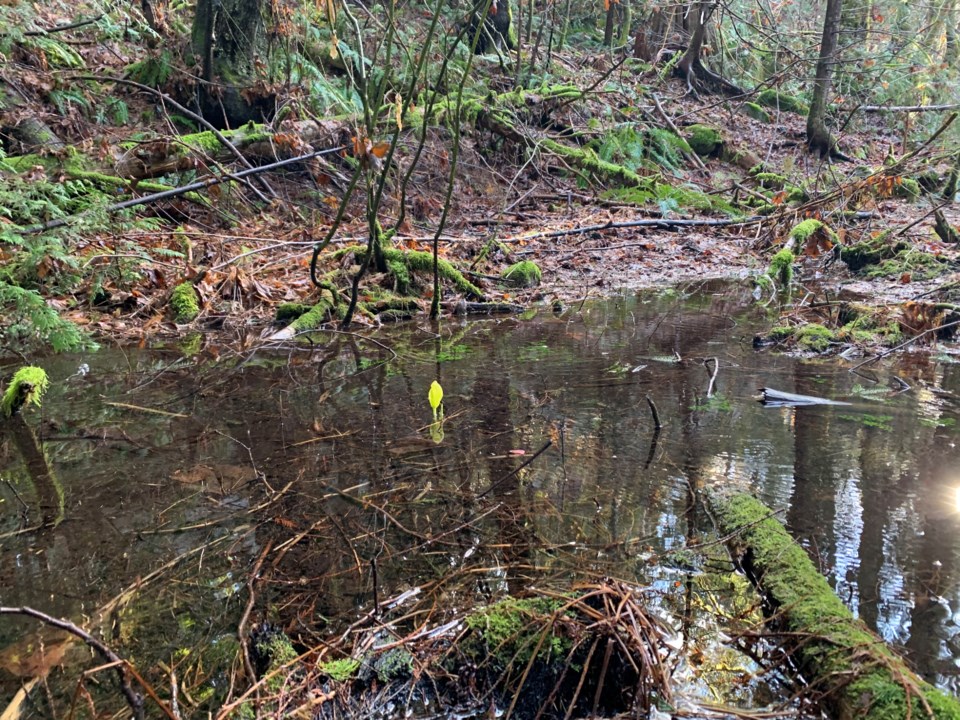No matter where I went or who I spoke with this week, a common thread seemed to weave its way through my conversations.
Up the mountain for the Whistler Pride parade; in the queues of drunk Aussies celebrating Australia Day in Whistler Village; and even passing by a conference of otolaryngologists at the Hilton as I searched in vain for a free table at the Cinnamon Bear.
An eclectic bunch, to say the least, but all spouting some version of the same refrain: sure feels like spring out here, eh?
As much as I’d like to, it’s hard to deny it. As the rain methodically washes away the snow in my yard; as my thoughts turn to bike rides by sprouting skunk cabbage and hungry, under-hibernated bears; as I eye the winterized barbecue by my door, I start to accept the early opening act of spring may be officially, if prematurely, underway, whether we’re ready or not.
And then I start to wonder about the longer-term impacts all this rain is having on Whistler’s forests and ecosystems.
According to local biologist and founder of the Whistler Naturalists, Bob Brett, Whistler has seen a big change in summer creek flows in places such as the River of Golden Dreams (ROGD) in the past couple years.
“That’s consistent with glacial melt: there’s less total meltwater, and it doesn’t extend as far into the summer,” Brett said in an email.
“With lower water levels, water temperatures can be expected to increase. These changes affect fish and also, in the case of the ROGD, recreation.”
As of Tuesday, Jan. 30, Whistler Blackcomb had a base depth of about 143 centimetres, up from the 99 cm measured at the beginning of January, but well below where things should typically stand in late January (read more about that here).
A low snowpack only compounds the issues with water levels, Brett noted.
“Many of the forests in Whistler established in wetter conditions, especially subalpine forests that support ancient yellow cedars and other species. Soils in those forests would have remained moist well into the growing season, partly due to precipitation but also due to delayed snowmelt,” he said.
“The sub-surface movement of rainfall and snowmelt through the soil is much slower than when water is channelized in streams or ditches. (One hidden impact of logging is that the criss-cross of roads brings sub-surface drainage to the surface, and thereby helps to dry the soil.) It thereby helps regulate water flows so that they are less ‘flashy.’”
So the lack of snow and increased rainfall has clear knock-on effects in the valley—how is it impacting things up top?
According to Adam Francis, director of mountain operations for Whistler Blackcomb (WB), the current El Niño weather pattern is producing higher-than-normal freezing levels, and contributed to a delayed opening of the high alpine until just prior to New Year’s.
At that point, WB was able to open and maintain key alpine routes, with the exception of Showcase T-bar and lift access to the Blackcomb Glacier.
“Additionally, the warmer-than-average temperatures limited our ability to produce artificial snow at times in November and December. We worked strategically with our snow-producing equipment to maximize periods of favourable temperatures as they developed,” Francis said.
“The arrival of arctic outflow conditions the first week of January provided an optimal period for us. During that 11-day span, we were able to convert 97 million gallons of water to snow production, building and locking in all four ski-outs and our Valley Kids carpets, while delivering various training venues to local clubs for athlete development.”
WB is currently directing snowcat resources nightly to help prepare the Showcase T-bar trackline to open that terrain as soon as possible, he added.
Before the most recent wave of rain, WB was about 95 per cent open, with 7,800 acres of terrain accessible to skiers and snowboarders.
“Recent conditions have changed some lower-mountain terrain statuses, but we anticipate recovering sufficiently with our snow plant and run-rebuilding capabilities from our snowcat crews once temperatures drop later this week,” Francis said Jan. 29.
Historically, WB would be 100-per-cent open at this point—but the mountain operator isn’t losing hope for the remainder of the 2023-24 ski season.
“[W]ith favourable weather conditions we can catch up rapidly with both artificial snow production and natural snowfall—as we were able to do earlier in this month,” Francis said.
As always, safety remains top of mind for all guests at Whistler Blackcomb (find more safety tips here).
“As we have done all season, we will continue to manage all of our terrain safely and as conditions permit, so that guests can enjoy the mountain to its fullest,” Francis said.
“This has been an abnormal season, and we appreciate our guests’ patience and understanding as our teams navigate its challenges.”
So with any luck, spring’s early arrival will amount to an abnormal blip; a footnote in the eventual retrospective of the strange, wet ski season that was.
In the meantime, there are actions to take on the ground to ward off spring’s early advances, Brett said.
“One way we can delay snowmelt is to have more closed forest,” he said. “Clearcuts and other open areas accumulate more snow (due to less canopy interception), but also melt much more quickly.”
Food for thought.




